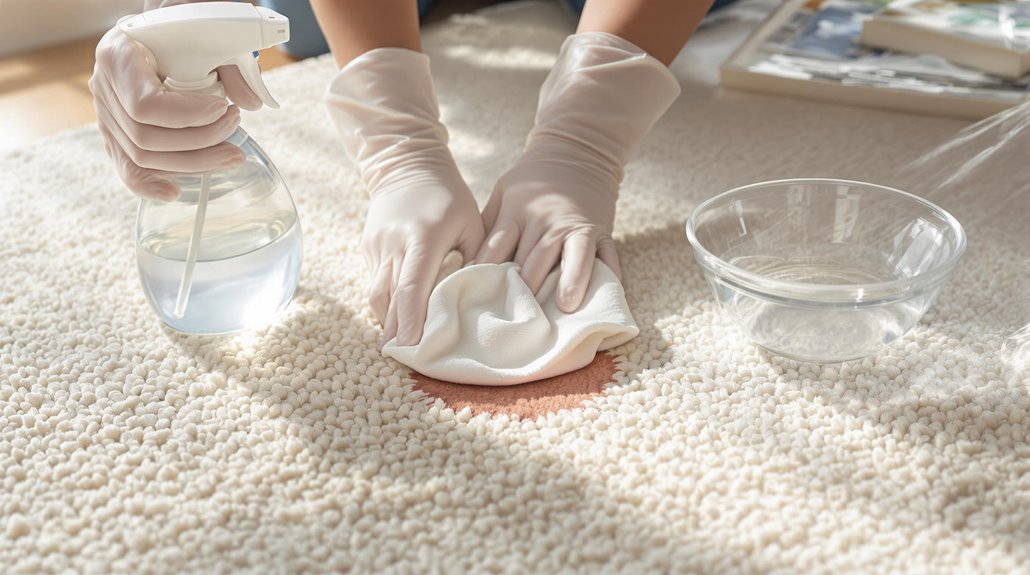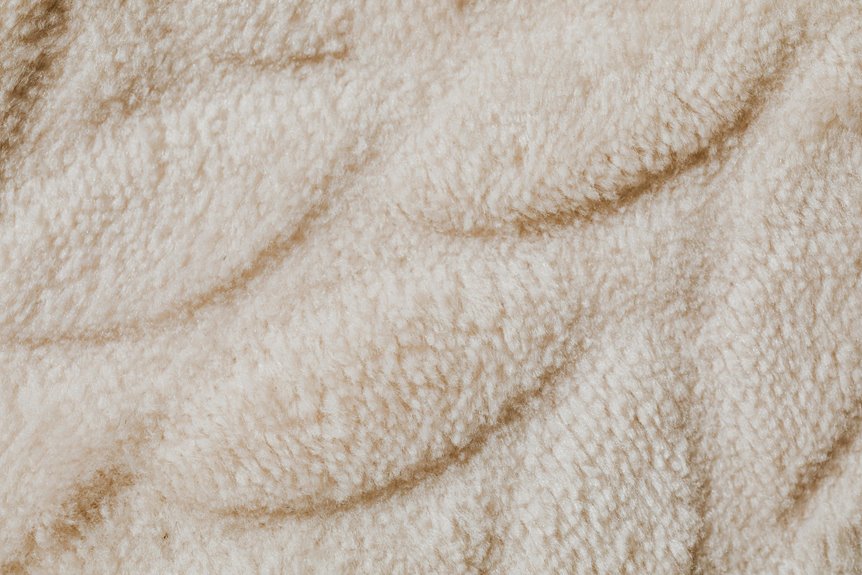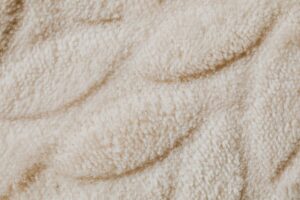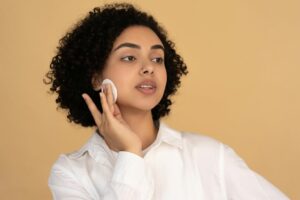I’ve learned through years of caring for delicate carpets that viscose requires an especially gentle touch – it’s one of the trickiest fibers to maintain properly. From dealing with its sensitivity to moisture to preventing those dreaded brown water spots, I’ll share my tested methods for keeping your viscose carpet looking beautiful. Let’s start with the essential techniques that will help you avoid the common mistakes that can permanently damage these luxurious but temperamental fibers.
Understanding Viscose Carpet Properties and Care Requirements

Viscose carpets, with their silk-like appearance and luxurious sheen, require special care to maintain their beauty and durability over time.
I’ve learned that understanding viscose fiber characteristics is essential before attempting any cleaning, as these delicate fibers can be surprisingly sensitive to moisture and pressure.
Let me explain the key carpet durability factors you’ll need to take into account.
First, viscose fibers tend to flatten easily and can lose their shape when exposed to heavy foot traffic.
They’re also prone to yellowing if exposed to direct sunlight, and they’ll weaken considerably when wet.
That’s why I always recommend treating your viscose carpet with extra caution – avoid placing it in high-traffic areas or rooms with excessive moisture, like bathrooms or kitchens.
Essential Tools and Products for Safe Viscose Cleaning
Now that you understand how sensitive these carpets can be, let’s review the cleaning tools and supplies you’ll want to have on hand.
I recommend starting with a high-quality vacuum cleaner that has adjustable height settings and soft bristles, avoiding common cleaning myths about using aggressive brushes.
You’ll need white microfiber cloths, a spray bottle for solutions, and a gentle carpet cleaning product specifically formulated for delicate fiber types like viscose.
I always keep hydrogen peroxide, white vinegar, and lukewarm water nearby for spot cleaning.
Unlike other carpet varieties, viscose requires specialized tools like a moisture-extraction vacuum or clean, dry towels for blotting.
Don’t forget a wide-tooth carpet rake or soft brush to restore the fibers’ direction after cleaning.
Daily Maintenance and Preventive Care Tips
While owning a viscose carpet adds elegance to your home, protecting its beauty requires consistent daily care and preventive measures that I’ve learned through years of experience.
I recommend using proper vacuuming techniques, like going over each area twice with a suction-only vacuum head on the highest setting to prevent fiber damage.
For stain prevention, I always place doormats at every entrance and enforce a strict no-shoes policy in carpeted areas.
I’ve found that rotating furniture every few months helps prevent permanent indentations, and placing protective pads under heavy pieces is essential.
You’ll also want to close curtains during peak sunlight hours since I’ve noticed viscose fibers can weaken from prolonged UV exposure.
Step-by-Step Guide to Spot Cleaning Viscose

Even with the best preventive measures, accidents happen, so let’s examine how to properly spot clean those inevitable spills and stains on your carpeting.
When I tackle spot cleaning on viscose carpets, I always start by blotting the spill with a clean white cloth, working from the edges toward the center to prevent spreading.
I’ll never rub the stain, as this can damage the delicate fibers. For my stain removal solution, I mix one part mild dish soap with four parts cold water.
Using a clean cloth, I’ll dab this mixture gently onto the spot, then blot with a separate dry cloth to absorb the moisture.
After cleaning, I point a fan directly at the area to speed up drying and prevent water marks from forming.
Professional Cleaning Options and When to Use Them
Since viscose carpets require special care and expertise during deep cleaning, professional services become essential for maintaining their beauty and longevity. I recommend scheduling professional cleaning every 12-18 months, depending on foot traffic and wear patterns in your home.
| Service Type | Best For | When to Use |
|---|---|---|
| Hot Water Extraction | Deep cleaning | Annual maintenance |
| Dry Cleaning | Light soiling | Every 6 months |
| Steam Cleaning | Sanitizing | Heavy soiling |
| Encapsulation | Surface dirt | Quarterly refresh |
While professional services might seem costly, I’ve found they’re worth the investment to protect your viscose carpet. Look for cleaners who specifically mention experience with viscose or artificial silk carpets, and always ask about their cleaning methods beforehand to guarantee they won’t use harsh chemicals that could damage your carpet’s delicate fibers.
Restoring and Protecting Your Viscose Carpet
Although viscose carpets can lose their luster over time, I’ve discovered several effective methods for restoring their natural shine and safeguarding them from future damage.
I recommend starting with gentle restoration techniques, like using a dry extraction cleaner specifically formulated for delicate fibers, followed by careful brushing in one direction.
For long-term fiber protection, I always suggest applying a quality fabric protector designed for viscose, which creates an invisible barrier against spills and stains.
When protecting your carpet, work in small sections and guarantee even coverage throughout. I’ve found that reapplying protection every 12-18 months helps maintain the carpet’s resilience and appearance.
Remember to place protective pads under furniture legs and rotate rugs periodically to prevent permanent indentations and uneven wear patterns.







